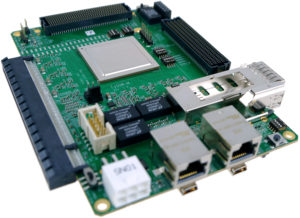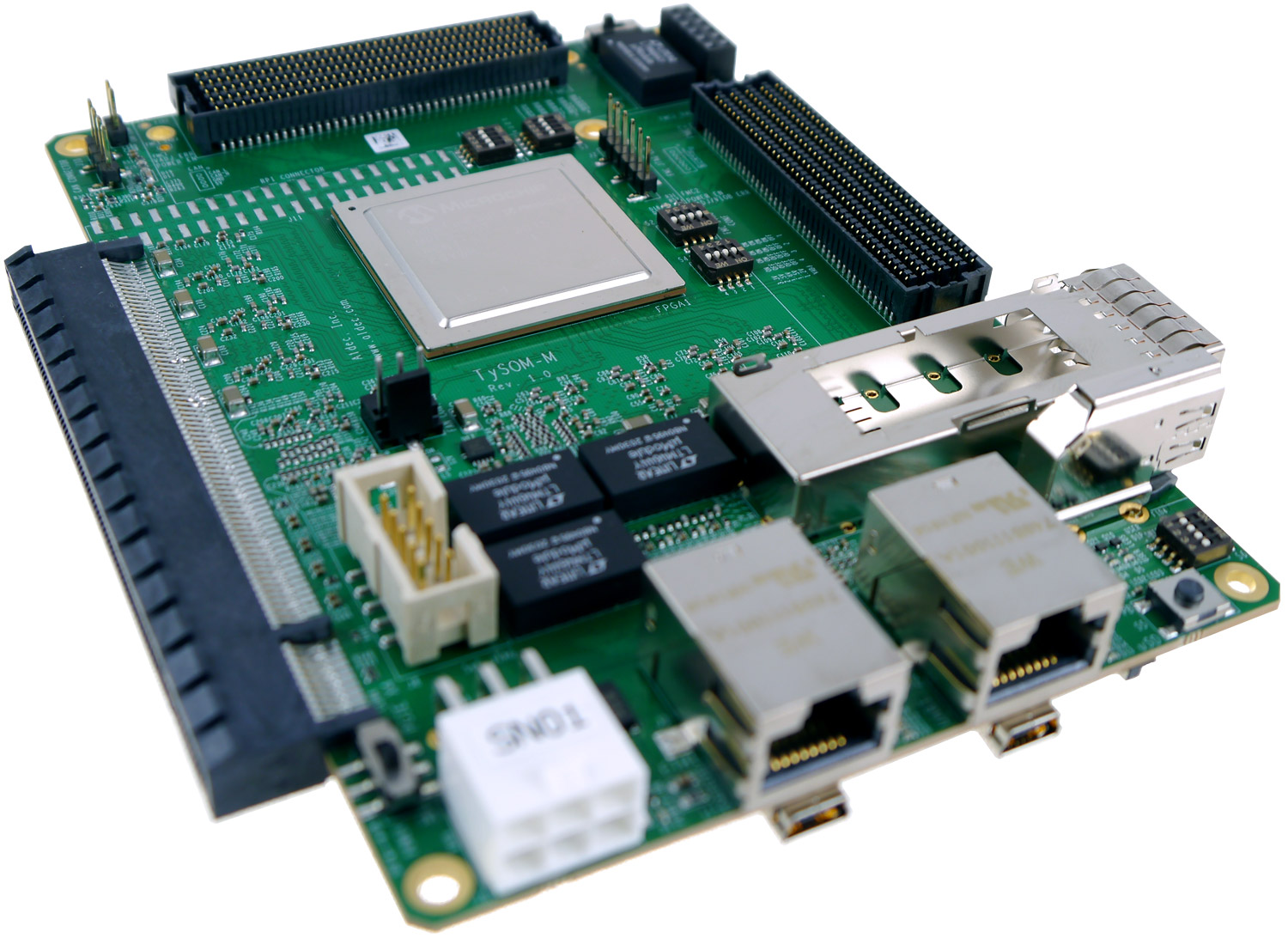TySOM-M-MPFS250 is Aldec’s First Embedded Prototyping Platform Family Member to Feature a PolarFire® SoC FPGA
Henderson, NV – July 7, 2021 – Aldec, Inc., a pioneer in mixed HDL language simulation and hardware-assisted verification for FPGA and ASIC designs, has extended its TySOM family of embedded prototyping boards with the introduction of TySOM-M-MPFS250; the first in a planned series to feature a Microchip PolarFire® SoC FPGA MPFS250T-FCG1152 and to have dual FMC connectivity.
Microchip’s PolarFire SoC FPGA boasts low power consumption, impressive thermal efficiency and defense-grade security for smart, connected systems. It is also heralded as the first SoC FPGA to provide a coherent RISC-V CPU cluster and a deterministic L2 memory subsystem – and is therefore capable of running Linux and real-time applications.
The RISC-V CPU micro-architecture implementation in the PolarFire SoC MPFS250T-FCG1152 is a five-stage single issue in-order pipeline. The five cores are 1x SiFive E51 Monitor core (RV64IMAC) and 4x SiFive U54 Application cores (RV64GC). Of these five cores, four can be used for the Linux OS. The SoC FPGA also includes 254K of FPGA logic elements, LSRAM, uPROM and uRAM.
In terms of board memory, the TySOM-M-MPFS250 contains 16Gb FPGA DDR4 x32, 16Gb MSS DDR4 x36 with ECC, eMMC, SPI Flash memory, 64 Kb EEPROM and a microSD card socket. In addition to the dual FMC connectivity, there are 2x Ethernet 10/100/1000, 1x USB 2.0, a USB to UART bridge, a PCIe x4 Gen2 root, CAN and HDMI OUT interfaces for external communications.
“Microchip PolarFire SoC FPGA devices are the lowest power, multi-core SoC FPGAs on the market,” comments Krishnakumar R, product marketing and Mi-V ecosystem manager at Microchip Technology. “PolarFire SoC FPGAs also enable triple-layer security that protects the hardware, design and data, plus each processor core has physical memory protection, to enforce access restrictions depending on the machine’s privilege state. Aldec’s decision to use PolarFire SoC FPGA in its new TySOM-M family will enable users to design for a wealth of applications requiring low power and high security.”
Zibi Zalewski, General Manager of Aldec’s Hardware Division, adds: “Our TySOM-M debut board inherits all the features and benefits of the PolarFire SoC FPGA. These, combined with the board’s own features and benefits, provide engineers with a highly versatile platform for developing applications that will cost less than if they were to target ARM cores. Also, the board’s ability to connect to two FMC daughter cards means it can be used in virtually any industry sector without having to develop custom hardware. This really is a powerful plug-and-play solution.”
Zalewski goes to say that the debut board in Aldec’s new TySOM-M series can accommodate larger PolarFire SoC FPGAs, as and when they become available, and that the boards for prototyping designs targeting those devices would be available shortly after; all as part of the company’s commitment to RISC-V.


Notes to Editors
About TySOM
TySOM is a family of embedded system prototyping boards. Depending on the board, one of three FPGAs will be at its heart: a Xilinx Zynq® UltraScale+™, a Xilinx Xilinx Zynq-7000 or a Microchip PolarFire SoC. The boards are compatible, through the industry standard FMC interface, with Aldec’s wide range daughter cards making Aldec’s TySOM embedded prototyping boards ideal for the rapid development of applications that include automotive (and ADAS, in particular), artificial intelligence (AI), machine learning (ML), embedded vision, embedded-HPC (including edge-processing), IoT, IIoT and industrial automation.
Click here to view pdf copy of this press release
Publications that ran with the news include;

